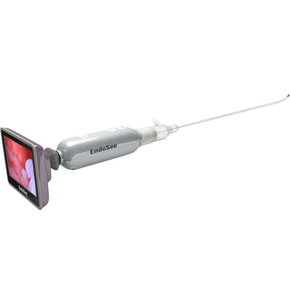OFFICE HYSTEROSCOPYWhat is Office Hysteroscopy?
Hysteroscopy is used to diagnose or treat problems of the uterus. A hysteroscope is a thin, lighted telescope-like device that is inserted through your vagina into the uterus. It transmits the image of your uterus onto a screen. Why is hysteroscopy done? One of the most common uses for hysteroscopy is to find the cause of abnormal uterine bleeding. It is also used to remove adhesions, diagnose the cause of repeated miscarriage or locate an intrauterine device. |
How is the procedure performed?
The Night before:
You will be instructed to take Ibuprofen and insert a vaginal suppository at bedtime.
Plan to arrive 30 minutes prior to your scheduled procedure time and make sure you have someone to take you home after the procedure.
During the procedure:
The procedure will take about 10 minutes. You may receive local anesthesia in your cervix 30 minutes before the procedure.
A speculum is first inserted into the vagina, then the hysteroscope is inserted and gently moved through the cervix into your uterus.
A fluid, such as saline (salt water), will be put through the hysteroscope into your uterus to expand it. The fluid helps your doctor see the lining more clearly. The amount of fluid used is carefully checked throughout the procedure.
If a biopsy or other procedure is done, small instruments will be passed through the hysteroscope.
What to expect during recovery?
It is normal to experience some mild cramping or little bloody discharge for a few days after the procedure. You may be given medication to help ease the pain.
A watery discharge immediately after the procedure is normal.
If you have fever, chills or heavy bleeding, call the office right away.




